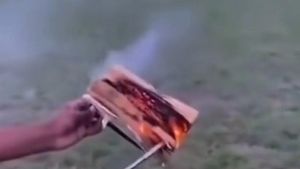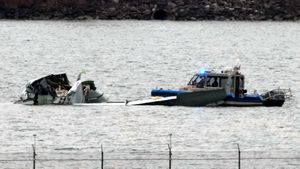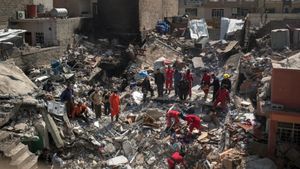North Korean troops have been pulled back from the frontline amid devastating losses, according to Ukrainian and American officials. Kim Jong Un’s forces have not been seen on the battlefield for approximately three weeks, as reported by Ukrainian special forces and covered by The New York Times. The withdrawal follows the deployment of roughly 11,000 soldiers, sent to assist Vladimir Putin’s war efforts back in November of the previous year, following Ukraine's significant territorial gains against Russian forces.
Once embedded along the northern front, these North Korean soldiers earned a fearsome reputation, becoming known as fierce and committed fighters. Reports indicated they would rather choose suicide than face the humiliation of surrender. Yet, they were hindered by poor military tactics and the complications presented by language barriers, which made effective communication and coordination challenging.
According to the South Korean National Intelligence Service, by January, at least 300 of Kim’s soldiers had been killed, with another 2,700 suffering injuries since entering the conflict. These numbers outline the grim toll the soldiers have faced amid the intense combat dynamics present on the battlefield. U.S. and Ukrainian officials suggest these withdrawn North Korean troops may eventually return after receiving reinforcements and additional military training.
Reflecting the dire circumstances they found themselves in, the last written notes of one slain North Korean soldier shed light on the brutal tactics they were compelled to employ under Russian command. An entry from his diary revealed their dangerous strategy: soldiers were ordered to position themselves just seven meters from advancing Ukrainian drones to allow their comrades to fire at them effectively. The soldier, whose crude sketches and scrawled handwriting were later authenticated, described how this tactic worked: “When the bait stands still, the drone will stop and it will be shot down.” This account paints a vivid picture of the ruthless battlefield conditions these soldiers faced.
This soldier’s diary was found on December 21, amplifying the tragic narrative surrounding their involvement. Compounding the narrative of deceit, Ukrainian President Volodymyr Zelensky disclosed the capture of two North Korean soldiers, who were misled about their deployment. They believed they were partaking in training exercises rather than fighting against Ukraine. “I did not know I was fighting in a war against Ukraine; my commanders told me it was a training exercise,” stated one captured soldier, drawing attention to the misinformation affecting soldiers on the ground.
Adding to these revelations, it was reported by President Zelensky, one of the captured soldiers possessed military documents issued to another person, heightening concerns about how these troops ended up enlisted and deployed. An ID card was shown, reportedly belonging to a 26-year-old from Russia’s Tyva region, bordering Mongolia, which raises unsettling questions about the recruitment and deployment strategies being utilized by the North Korean regime and its partners.
With the withdrawal of these troops, discussions about future replacements and possible reinforcements take center stage. The North Korean regime appears poised to recalibrate its military approach, potentially enhancing training and restrategizing before sending forces back to the frontline. Military analysts suggest this retreat may not signal the end of North Korea’s engagements abroad, especially considering the strategic interests at play.
The tangled web of geopolitics, misinformation, and battlefield reality serves as both cautionary and illuminating. For North Korean soldiers caught amid the thunderous clash of powers, they have become pawns, facing not only the threats from opposing forces but also manipulative tactics from their own leadership. History will certainly judge how these desperate measures and strained alliances play out.
Overall, the withdrawal of North Korean troops amid significant casualties opens the door to multiple outcomes and questions about the stability of their alliances and the future of the conflict. With units potentially awaiting reinforcement and training, the ramifications stretch across borders, characterized by a complex interplay of military dynamics and political strategy.
While the situation remains fluid, the plight of the North Korean soldiers, coupled with the unraveling circumstances of their engagement, highlights the harsh realities of warfare—both for individuals confined to the battlefield and nations strategizing behind the scenes. The narrative of these soldiers may evolve as they, alongside their commanders, navigate the shifting tides of conflict.



